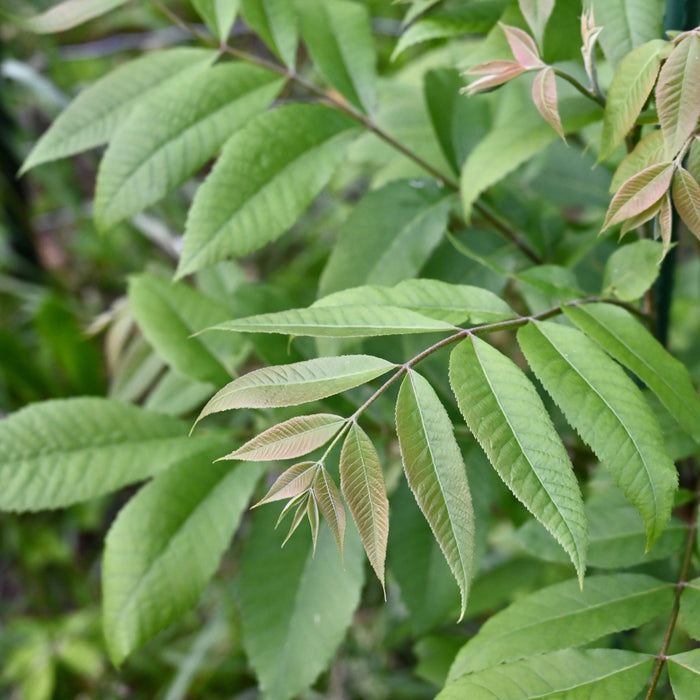
Northern Pecan (Carya illinoinensis)
Estimated Height at Pickup: 3-4’, 3 gal
With commercial pecan agriculture based in the southern states, its easy to forget their range extends as far north as Chicago! But not all Carya illinoinsis are interchangeable- plants with southern genetics bear nuts later than their northern counterparts so, while they’ll survive in the north, they’ll never produce a nut crop. Our northern fertile pecan seedlings are grown from seeds collected in central Indiana, so will be right at home producing in the Midwest!
Pollination: 2+ individuals needed.
Light: Full Sun, Part Sun/Shade
Soil Moisture: Wet Mesic, Mesic
Soil Type: Loam, Sandy Loam, Clay Loam
Height: 70’-160’
Width: 40’-70’
Bloom Color: -
Bloom Time: Apr-May
Fruit: Sweet, edible nuts with thin husks mature in fall.
Fall Color: Yellow
Root Type: Taproot
Notable Wildlife Interactions: Like all hickories, it’s hosts many insects including the gray hairstreak butterfly, moths such as the luna and widow underwing, leafhoppers, and other insects. Nuts are high value to wildlife and eaten by many animals including wood duck, turkey, squirrels, deer, and woodpeckers. Commonly browsed by deer.
Notes: Nuts are produced in a two year cycle, with a large yield one year and a smaller yield the next. Most store bought pecans are from the southern states and a notable portion are still collected from wild trees. Old individuals (up to 300 years) have been recorded up to 160’ tall, but 70’-100’ is more common. Trees bear both male and female flowers and can self-pollinate, but not well. Two trees are recommended for best nut production. It is unclear whether or not pecans can be pollinated by other species of Carya in the vicinity and produce nuts. Trees bear nuts in 8-10 years.
Shipping Unavailable






